The Blitz Canvas: A Business Model Innovation Framework for Software Startups
Abstract
:1. Introduction
- The ability to prototype and test out concepts quickly.
- The ability to change direction quickly with evolving business scope/user problems.
- The ability to accommodate and handle sudden growth.
- A low barrier to entry—not many resources are required besides manpower, computer systems and internet connectivity.
- The ability to leverage SaaS business models to get a product or service up and running quickly.
- The ability to make changes to the product after it has been shipped, based on user feedback.
2. Related Work
2.1. Business Models
2.2. The Business Model Canvas (BMC)
2.3. Shortcomings of the BMC
2.4. Rationale for the Blitz Canvas
3. Research Methodology
- RQ1: Could an easy-to-use, process-driven framework be proposed to aid in business model development and innovation for software startups around a product concept?
- RQ2: Would the resultant framework provide a foundation for the rapid development of the business model for a clearly differentiated value proposition, while keeping in mind the management of startup capital?
- RQ3: Could the proposed framework be designed to address the shortcomings of the business model canvas outlined in Section 2.3 of this work?
4. The Blitz Canvas—A Proposal
4.1. Stage 1: Building the Foundation
4.2. Stage 2: Studying the User
4.3. Stage 3: Defining the Solution
4.4. Stage 4: Unique Selling Proposition
4.5. Stage 5: The User’s Feedback
4.6. Stage 6: Studying the Competition
4.7. Stage 7: Business Model Elements
4.8. Stage 8: Synergies
4.9. Stage 9: Managing Growth
4.10. Stage 10: Metrics
5. Analysis and Evaluation
5.1. Exploratory Analysis of Survey Data (Evaluation)
5.2. Survey Structure
5.3. Responses and Survey-to-Research Question Mapping
6. Literature Analysis on the Contributions of BC
- The proposal of a process-driven model that serves as a roadmap for startups in its business model development and innovation efforts.
- The integration of the study of competing market forces as part of the business model development and innovation process, which can help with product positioning in the market.
- The creation of a foundational base for the startup by establishing, as part of the BM process, the entity’s mission, vision, values and core competencies.
- Planning for potential synergies within business segments and future growth as part of the core business model innovation process, which can provide a platform for newer innovations in the form of products and services.
- The integration of metrics identification for tracking performance as part of the business model innovation process.
- A data-backed proof-of-concept to present the business model’s planning details, with a focus on critical success factors, as defined by the triple-cornerstone framework by Shanbhag and Pardede [66].
- A demonstration of overcoming the noted shortcomings of the business model canvas for business model development and innovation, while ensuring a quick process for said development.
- The traditional approach meets speed requirements and minimizes cost expenditure. In essence, this research explores the rediscovery of the usefulness offered by a more traditional approach to business model development, while at the same time mitigating its downsides, such as a delayed time to market and the higher costs associated with business model realization. The intent is to have a better understanding of and evaluate the advantages of a holistic approach to business model development rather than a lean approach, in the context of the usability of business modeling frameworks aimed at inexperienced or first-time entrepreneurs.
- The specialization of business model development toward a single industry sector. This research explores the potential to develop a business model development framework to better leverage the qualities of the software market. As indicated in the response to a previous question by a reviewer of this paper, most business model development frameworks are designed to be generic and are applicable across a wide variety of industries. While this can make it useful in many areas from manufacturing to healthcare, it comes with the cost of not leveraging the unique qualities of any one sector and helping the aspiring startup team to reach its potential by making use of key resources. Some examples of these qualities include the ability to quickly change direction by testing product concepts relatively fast, when compared to sectors such as transportation, manufacturing or healthcare, the ability to enter newer geographic market locations with a relatively small amount of effort and the ability to scale and capture a larger user-base by simply increasing the server bandwidth capacity.
- The encouragement of data-driven business model development. In addition to the previously mentioned points, business model development efforts are encouraged from a data-driven foundation. The question of the usefulness of leveraging data to guide decision-making in the business model development world has been discussed for many years. However, very few frameworks explicitly encourage their users to actively use metrics to help with such data-driven efforts. This research explores how a framework that leverages metrics to guide decision-making based on data would function. Besides the outlined contributions, this research evaluates the usefulness of a process-based approach vs. an open-canvas approach to business model development.
- Stage 3: Defining the solution, and Stage 5: User’s feedback—These stages help guide the team’s efforts toward rapid validation of the product concept by first creating an easily testable prototype, using low-fidelity wireframes (as part of stage 3), then collecting feedback from users based on their usage of these prototypes (as part of stage 5).
- Stage 5: User’s feedback—At the end of the same stage, when feedback is collected from users, the startup team has the option to change direction if the feedback from the users indicates that the created solution does not solve the user’s problem, or if the users generally do not see enough value in the solution that it might not be commercially viable to continue the development process.
- Step 9—Managing growth—The framework encourages the startup team to list possible steps that they can take to ensure they are prepared for growth and how they would manage a sudden increase in the number of users interested in the product offering.
- Step 4: Unique selling proposition, Step 6: Studying the competition, and Step 7: Business model elements—Since the barriers to entry in the software target market can be relatively low, identifying a unique value proposition can help software startups go a long way to retaining acquired and activated customers. Besides this finding, a study of the existing players in the market can also help to plan better strategies to develop and monetize the current product development efforts, along with saving resources by not having to “reinvent the wheel”. Lastly, step 7 of the framework helps startup teams to identify possible intellectual property assets that they can leverage to gain an edge over the competition.
- Step 7: Business model elements—to help get the product to the market and into the hands of customers as quickly as possible, the blitz canvas framework encourages the usage of SaaS products that could include third-party components, “Software as a Service” products and rapid application development frameworks, to reduce the time taken to develop the product in question. This is a unique trait of the software target market and one that is leveraged by few business model development frameworks to achieve a quicker time to market, which, in turn, can be important to the success of the product and, in turn, that of the business model.
- Step 10: Metrics—The identification and the usage of metrics in monitoring the relevance of the solution to solving the customers’ problems is crucial to the success of software products, as they can be modified after an initial version has been shipped to the customer. Identifying and using the right metrics to keep the solution relevant and useful to the customers can result in the continued success of the product; the blitz canvas framework helps software startups achieve this by incorporating metric identification as part of the core framework.
7. Conclusions and Future Work
Author Contributions
Funding
Informed Consent Statement
Conflicts of Interest
References
- Blank, S. The Four Steps to the Epiphany: Successful Strategies for Products That Win; BookBaby: Pennsauken Township, NJ, USA, 2013; ISBN 0-9892005-2-3. [Google Scholar]
- Adelino, M.; Ma, S.; Robinson, D. Firm Age, Investment Opportunities, and Job Creation. J. Financ. 2017, 72, 999–1038. [Google Scholar] [CrossRef]
- Sozen, E.; O’Neill, M. An Exploration of the Motivations Driving New Business Start-up in the United States Craft Brewing Industry. In Craft Beverages and Tourism; Springer: Berlin/Heidelberg, Germany, 2018; Volume 2, pp. 195–212. [Google Scholar]
- Timmons, J.A.; Spinelli, S.; Tan, Y. New Venture Creation: Entrepreneurship for the 21st Century; McGraw-Hill/Irwin: New York, NY, USA, 2004; Volume 6. [Google Scholar]
- Ryder, J. Startups Are Driving Job Growth in the New Economy. WorkingNation. 2019. Available online: https://workingnation.com/startups-are-driving-job-growth-in-the-new-economy/ (accessed on 25 June 2020).
- Potter, B. Start-Ups Create All New Jobs. Available online: https://www.afr.com/politics/startups-create-all-new-jobs-20160823-gqzh15 (accessed on 28 October 2020).
- Griffith, E. Startups Are Failing Because They Make Products No One Wants. Available online: https://fortune.com/2014/09/25/why-startups-fail-according-to-their-founders/ (accessed on 25 June 2020).
- Melegati, J.; Kon, F. Early-Stage Software Startups: Main Challenges and Possible Answers. In Fundamentals of Software Startups; Springer: Berlin/Heidelberg, Germany, 2020; pp. 129–143. [Google Scholar]
- Rafiq, U.; Melegati, J.; Khanna, D.; Guerra, E.; Wang, X. Analytics Mistakes That Derail Software Startups. In Proceedings of the Evaluation and Assessment in Software Engineering, Trondheim, Norway, 21–23 June 2021; ACM: New York, NY, USA, 2021; pp. 60–69. [Google Scholar]
- CB Insights 339 Startup Failure Post-Mortems. Available online: /research/startup-failure-post-mortem/ (accessed on 25 June 2020).
- Cerdeira, N.; Kotashev, K. Startup Failure Rate: Ultimate Report + Infographic. 2021. Available online: https://www.failory.com/blog/startup-failure-rate (accessed on 25 June 2020).
- Schneider, T.W. Building a Business Plan. J. Prop. Manag. 1998, 63, 6. [Google Scholar]
- Ghezzi, A.; Cavallaro, A.; Rangone, A.; Balocco, R. A Comparative Study on the Impact of Business Model Design & Lean Startup Approach versus Traditional Business Plan on Mobile Startups Performance. In Proceedings of the 17th International Conference on Enterprise Information Systems—Volume 3, Barcelona, Spain, 27–30 April 2015; pp. 196–203. [Google Scholar]
- Kraus, S.; Kauranen, I. Strategic Management and Entrepreneurship: Friends or Foes? Int. J. Bus. Sci. Appl. Manag. (IJBSAM) 2009, 4, 37–50. [Google Scholar]
- Ries, E. The Lean Startup: How Today’s Entrepreneurs Use Continuous Innovation to Create Radically Successful Businesses; Crown Publishing Group: New York, NY, USA, 2011; ISBN 978-0-307-88791-7. [Google Scholar]
- Osterwalder, A.; Pigneur, Y. Business Model Generation: A Handbook for Visionaries, Game Changers, and Challengers; John Wiley & Sons: Hoboken, NJ, USA, 2010; ISBN 0-470-87641-7. [Google Scholar]
- Casadesus-Masanell, R.; Zhu, F. Business Model Innovation and Competitive Imitation: The Case of Sponsor-based Business Models. Strateg. Manag. J. 2013, 34, 464–482. [Google Scholar] [CrossRef] [Green Version]
- Lindgardt, Z.; Reeves, M.; Stalk, G.; Deimler, M.S. Business Model Innovation. In When the Game Gets Tough, Change the Game; The Boston Consulting Group: Boston, MA, USA, 2009; Volume 118. [Google Scholar]
- Teece, D.J. Business Models, Business Strategy and Innovation. Long Range Plan. 2010, 43, 172–194. [Google Scholar] [CrossRef]
- Casadesus-Masanell, R.; Ricart, J.E. From Strategy to Business Models and onto Tactics. Long Range Plan. 2010, 43, 195–215. [Google Scholar] [CrossRef]
- Morris, M.; Schindehutte, M.; Allen, J. The Entrepreneur’s Business Model: Toward a Unified Perspective. J. Bus. Res. 2005, 58, 726–735. [Google Scholar] [CrossRef]
- Trimi, S.; Berbegal-Mirabent, J. Business Model Innovation in Entrepreneurship. Int. Entrep. Manag. J. 2012, 8, 449–465. [Google Scholar] [CrossRef]
- Chesbrough, H. Business Model Innovation: Opportunities and Barriers. Long Range Plan. 2010, 43, 354–363. [Google Scholar] [CrossRef]
- Keane, S.F.; Cormican, K.T.; Sheahan, J.N. Comparing How Entrepreneurs and Managers Represent the Elements of the Business Model Canvas. J. Bus. Ventur. Insights 2018, 9, 65–74. [Google Scholar] [CrossRef] [Green Version]
- Cowan, A. The 20 Minute Business Plan: Business Model Canvas Made Easy. Available online: https://www.alexandercowan.com/business-model-canvas-templates/ (accessed on 26 June 2020).
- Romme, A.G.L.; Reymen, I.M.M.J. Entrepreneurship at the Interface of Design and Science: Toward an Inclusive Framework. J. Bus. Ventur. Insights 2018, 10, e00094. [Google Scholar] [CrossRef]
- Fauvel, C. Criticisms, Variations and Experiences with Business Model Canvas Prof. Hong Y Ching. Eur. J. Agric. For. Res. 2013, 1, 26–37. [Google Scholar]
- Kraaijenbrink, J. Three Shortcomings of the Business Model Canvas. 2012. Available online: http://kraaijenbrink.com/2012/07/shortcomings-of-the-business-model-canvas/ (accessed on 26 June 2021).
- Maurya, A. Lean Canvas–How I Document My Business Model. 2010. Available online: http://www.ashmaurya.com/2010/08/businessmodelcanvas (accessed on 26 June 2021).
- Spanz, G. Startup Best Practice: Business Model Canvas. Retrieved April. 2012, 6, 2015. [Google Scholar]
- Blank, S.; Dorf, B. The Startup Owner’s Manual: The Step-by-Step Guide for Building a Great Company; BookBaby: Pennsauken Township, NJ, USA, 2012; ISBN 0-9892005-4-X. [Google Scholar]
- Kantabutra, S.; Avery, G.C. The Power of Vision: Statements That Resonate. J. Bus. Strategy 2010, 31, 37–45. [Google Scholar] [CrossRef] [Green Version]
- Sutton, S.M. The Role of Process in Software Start-Up. IEEE Softw. 2000, 17, 33–39. [Google Scholar] [CrossRef] [Green Version]
- Carmel, E. Time-to-Completion in Software Package Startups. In Proceedings of the Twenty-Seventh Hawaii International Conference on System Sciences, Wailea, HI, USA, 4–7 January 1994; Volume 4, pp. 498–507. [Google Scholar]
- Carmel, E.; Sawyer, S. Packaged Software Development Teams: What Makes Them Different? Info Technol. People 1998, 11, 7–19. [Google Scholar] [CrossRef] [Green Version]
- Giardino, C.; Wang, X.; Abrahamsson, P. Why Early-Stage Software Startups Fail: A Behavioral Framework. In Software Business, Towards Continuous Value Delivery; Lassenius, C., Smolander, K., Eds.; Lecture Notes in Business Information Processing; Springer International Publishing: Berlin/Heidelberg, Germany, 2014; pp. 27–41. ISBN 978-3-319-08737-5. [Google Scholar]
- Lee, S.M.; Olson, D.L.; Trimi, S. Co-Innovation: Convergenomics, Collaboration, and Co-Creation for Organizational Values. Manag. Decis. 2012, 50, 817–831. [Google Scholar] [CrossRef]
- De Bono, E. Six Thinking Hats; Penguin UK: London, UK, 2017; ISBN 0-241-33687-2. [Google Scholar]
- Pearce, J.A.; David, F. Corporate Mission Statements: The Bottom Line. Acad. Manag. Perspect. 1987, 1, 109–115. [Google Scholar] [CrossRef]
- Alt, R.; Zimmermann, H.-D. Introduction to Special Section-Business Models. Electron. Mark.-Int. J. 2001, 11, 1019–6781. [Google Scholar]
- Maurya, A. Running Lean: Iterate from Plan A to a Plan That Works; O’Reilly Media, Inc.: Sebastopol, CA, USA, 2012; ISBN 1-4493-3191-2. [Google Scholar]
- Collins, J.C.; Porras, J.I. Building Your Company’s Vision. Harv. Bus. Rev. 1996, 74, 65. [Google Scholar]
- Moogk, D.R. Minimum Viable Product and the Importance of Experimentation in Technology Startups. Technol. Innov. Manag. Rev. 2012, 2, 3. [Google Scholar]
- Gralha, C.; Damian, D.; Wasserman, A.; Goulão, M.; Araújo, J. The Evolution of Requirements Practices in Software Startups. In Proceedings of the 2018 IEEE/ACM 40th International Conference on Software Engineering (ICSE), Gothenburg, Sweden, 27 May–3 June 2018; pp. 823–833. [Google Scholar]
- Seppänen, P.; Liukkunen, K.; Oivo, M. On the Feasibility of Startup Models as a Framework for Research on Competence Needs in Software Startups. In Proceedings of the 16th International Conference on Product-Focused Software Process Improvement, Bolzano, Italy, 2–4 December 2015; pp. 569–576. [Google Scholar] [CrossRef]
- Gupta, V.; Fernandez-Crehuet, J.M.; Gupta, C.; Hanne, T. Freelancing Models for Fostering Innovation and Problem Solving in Software Startups: An Empirical Comparative Study. Sustainability 2020, 12, 10106. [Google Scholar] [CrossRef]
- Prahalad, C.K.; Hamel, G. The Core Competence of the Corporation. In Strategische Unternehmungsplanung—Strategische Unternehmungsführung; Springer: Berlin/Heidelberg, Germany, 2006; pp. 275–292. [Google Scholar]
- Rothaermel, F.T.; Hitt, M.A.; Jobe, L.A. Balancing Vertical Integration and Strategic Outsourcing: Effects on Product Portfolio, Product Success, and Firm Performance. Strateg. Manag. J. 2006, 27, 1033–1056. [Google Scholar] [CrossRef]
- Nowak, M.J.; Grantham, C.E. The Virtual Incubator: Managing Human Capital in the Software Industry. Res. Policy 2000, 29, 125–134. [Google Scholar] [CrossRef]
- Ahmed, S.Z.F.; Koubaa, M.B. Core Competencies and Phases of the Organizational Life Cycle. Int. J. Bus. Manag. Stud. 2013, 5, 461–473. [Google Scholar]
- Haas, M.; Kunz, W.H. How to Master the Challenges of Service Mass Customization–A Persona-Based Approach. In Handbook of Research in Mass Customization and Personalization; World Scientific: Singapore, 2010; Volume 2, pp. 603–621. [Google Scholar]
- Perdana, R.A.; Suzianti, A.; Ardi, R. Crowdfunding Website Design with Lean Product Process Framework. In Proceedings of the 3rd International Conference on Communication and Information Processing, Tokyo Japan, 24–26 November 2017; pp. 369–374. [Google Scholar]
- Wölbling, A.; Krämer, K.; Buss, C.N.; Dribbisch, K.; LoBue, P.; Taherivand, A. Design Thinking: An Innovative Concept for Developing User-Centered Software. In Software for People; Springer: Berlin/Heidelberg, Germany, 2012; pp. 121–136. [Google Scholar]
- Cohn, M. User Stories Applied: For Agile Software Development; Addison-Wesley Professional: Boston, MA, USA, 2004; ISBN 0-321-20568-5. [Google Scholar]
- Silva, T.R.; Hak, J.-L.; Winckler, M. Testing Prototypes and Final User Interfaces through an Ontological Perspective for Behavior-Driven Development. In Human-Centered and Error-Resilient Systems Development; Springer: Berlin/Heidelberg, Germany, 2016; pp. 86–107. [Google Scholar]
- Betta, J.; Chlebus, T.; Kuchta, D.; Skomra, A. Applying Scrum in New Product Development Process. In Proceedings of the Advances in Manufacturing II, Poznan, Poland, 19–22 May 2019; Trojanowska, J., Ciszak, O., Machado, J.M., Pavlenko, I., Eds.; Springer International Publishing: Berlin/Heidelberg, Germany, 2019; pp. 190–200. [Google Scholar]
- Barczak, G.; Kahn, K.B. Identifying New Product Development Best Practice. Bus. Horiz. 2012, 55, 293–305. [Google Scholar] [CrossRef]
- Foroutan, M.; Baski-Reeves, K. Need for Development and Validation of a New Product Development (NPD) Assessment and Improvement Tool: A Review of Literature. Afr. J. Bus. Manag. 2017, 11, 127–139. [Google Scholar]
- Lucassen, G.; Dalpiaz, F.; van der Werf, J.M.E.M.; Brinkkemper, S. Improving Agile Requirements: The Quality User Story Framework and Tool. Requir. Eng. 2016, 21, 383–403. [Google Scholar] [CrossRef] [Green Version]
- Hudson, W. User Stories Don’t Help Users: Introducing Persona Stories. Interactions 2013, 20, 50–53. [Google Scholar] [CrossRef]
- Marthasari, G.; Suharso, W.; Ardiansyah, F.A. Personal Extreme Programming with MoSCoW Prioritization for Developing Library Information System. Proceeding Electr. Eng. Comput. Sci. Inform. 2018, 5, 537–541. [Google Scholar]
- Voigt, B.J.; Glinz, M.; Seybold, D.-I.C. Dynamic System Development Method; Department of Information Technology, University of Zurich: Zurich, Switzerland, 2004. [Google Scholar]
- Racheva, Z.; Daneva, M.; Buglione, L. Supporting the Dynamic Reprioritization of Requirements in Agile Development of Software Products. In Proceedings of the 2008 Second International Workshop on Software Product Management, Barcelona, Spain, 9 September 2008; pp. 49–58. [Google Scholar]
- Abdel-Hamid, T.K. The Dynamics of Software Project Staffing: A System Dynamics Based Simulation Approach. IEEE Trans. Softw. Eng. 1989, 15, 109–119. [Google Scholar] [CrossRef]
- Christoforakos, L.; Diefenbach, S. Idealization Effects in UX Evaluation at Early Concept Stages: Challenges of Low-Fidelity Prototyping. In Proceedings of the International Conference on Applied Human Factors and Ergonomics, Orlando, FL, USA, 21–25 July 2018; Springer: Berlin/Heidelberg, Germany, 2018; pp. 3–14. [Google Scholar] [CrossRef]
- Shanbhag, N.; Pardede, E. The Dynamics of Product Development in Software Startups: The Case for System Dynamics. Int. J. Syst. Dyn. Appl. (IJSDA) 2019, 8, 51–77. [Google Scholar] [CrossRef]
- Borseman, M.; Tanev, S.; Weiss, M.; Rasmussen, E.S. Lost in the Canvases: Managing Uncertainty in Lean Global Startups. In Proceedings of the ISPIM Innovation Symposium, Boston, MA, USA, 13–16 March 2016. [Google Scholar]
- Kawano, A.; Motoyama, Y.; Aoyama, M. A LX (Learner EXperience)-Based Evaluation Method of the Education and Training Programs for Professional Software Engineers. In Proceedings of the 2019 7th International Conference on Information and Education Technology, Aizuwakamatsu, Japan, 29–31 March 2019; pp. 151–159. [Google Scholar]
- Sauvola, T.; Rontti, S.; Laivamaa, L.; Oivo, M.; Kuvaja, P. Integrating Service Design Prototyping into Software Development. ICSEA 2016, 2016, 338. [Google Scholar]
- Furr, N.; Ahlstrom, P. Nail It Then Scale It: The Entrepreneur’s Guide to Creating and Managing Breakthrough Innovation; NISI Institute: Hong Kong, China, 2011; ISBN 0-9837236-0-5. [Google Scholar]
- Rasmussen, E.S.; Tanev, S. Lean Start-up: Making the Start-up More Successful. In Start-Up Creation; Elsevier: Amsterdam, The Netherlands, 2016; pp. 39–56. [Google Scholar]
- Rafiq, U.; Bajwa, S.S.; Wang, X.; Lunesu, I. Requirements Elicitation Techniques Applied in Software Startups. In Proceedings of the 43rd Euromicro Conference on Software Engineering and Advanced Applications (SEAA), Vienna, Austria, 30 August–1 September 2017; pp. 141–144. [Google Scholar] [CrossRef]
- Bajwa, S.S.; Wang, X.; Duc, A.N.; Abrahamsson, P. “Failures” to Be Celebrated: An Analysis of Major Pivots of Software Startups. Empir. Softw. Eng. 2017, 22, 2373–2408. [Google Scholar] [CrossRef]
- Tripathi, N.; Seppänen, P.; Oivo, M.; Similä, J.; Liukkunen, K. The Effect of Competitor Interaction on Startup’s Product Development. In Proceedings of the 43rd Euromicro Conference on Software Engineering and Advanced Applications (SEAA), Vienna, Austria, 30 August–1 September 2017; pp. 125–132. [Google Scholar]
- Fisher III, W.W.; Oberholzer-Gee, F. Strategic Management of Intellectual Property: An Integrated Approach. Calif. Manag. Rev. 2013, 55, 157–183. [Google Scholar] [CrossRef] [Green Version]
- Cho, Y.; Kirkewoog, S.; Daim, T.U. Managing Strategic Intellectual Property Assets in the Fuzzy Front End of New Product Development Process. RD Manag. 2018, 48, 354–374. [Google Scholar] [CrossRef]
- Somaya, D.; Graham, S.J. Vermeers and Rembrandts in the Same Attic: Complementarity between Copyright and Trademark Leveraging Strategies in Software. Ga. Inst. Technol. TIGER Work. Pap. 2006, 1–33. [Google Scholar] [CrossRef] [Green Version]
- Joshi, S. PaaS (Platform-as-a-Service). Available online: https://www.ibm.com/cloud/learn/paas (accessed on 1 May 2020).
- Serrano, N.; Gallardo, G.; Hernantes, J. Infrastructure as a Service and Cloud Technologies. IEEE Softw. 2015, 32, 30–36. [Google Scholar] [CrossRef]
- Mac an Bhaird, C.; Lynn, T. Seeding the Cloud: Financial Bootstrapping in the Computer Software Sector. Ventur. Cap. 2015, 17, 151–170. [Google Scholar] [CrossRef] [Green Version]
- Melegati, J.; Goldman, A. Seven Patterns for Software Startups. In Proceedings of the 22nd Conference on Pattern Languages of Programs (PLoP’15), Pittsburgh, PA, USA, 24–26 October 2015. [Google Scholar]
- Loon, M.; Quan, X.I. Theorising Business Model Innovation: An Integrated Literature Review. Aust. J. Manag. 2020, 46, 548–577. [Google Scholar] [CrossRef]
- Nielsen, C.; Lund, M. Building Scalable Business Models. MIT Sloan Manag. Rev. 2018, 59, 65–69. [Google Scholar]
- Van Den Berk, I.; Jansen, S.; Luinenburg, L. Software Ecosystems: A Software Ecosystem Strategy Assessment Model. In Proceedings of the 4th European Conference on Software Architecture: Companion Volume, Copenhagen, Denmark, 23–26 August 2010. [Google Scholar]
- Knauber, P.; Muthig, D.; Schmid, K.; Widen, T. Applying Product Line Concepts in Small and Medium-Sized Companies. IEEE Softw. 2000, 17, 88–95. [Google Scholar] [CrossRef] [Green Version]
- Barykin, S.Y.; Kapustina, I.V.; Kirillova, T.V.; Yadykin, V.K.; Konnikov, Y.A. Economics of Digital Ecosystems. J. Open Innov. Technol. Mark. Complex. 2020, 6, 124. [Google Scholar] [CrossRef]
- Klein, L. UX for Lean Startups: Faster, Smarter User Experience Research and Design; O’Reilly Media, Inc.: Sebastopol, CA, USA, 2013; ISBN 978-1-4493-3504-5. [Google Scholar]
- Croll, A.; Yoskovitz, B. Lean Analytics: Use Data to Build a Better Startup Faster; O’Reilly Media, Inc.: Sebastopol, CA, USA, 2013; ISBN 1-4493-3567-5. [Google Scholar]
- Rodden, K.; Hutchinson, H.; Fu, X. Measuring the User Experience on a Large Scale: User-Centered Metrics for Web Applications. In Proceedings of the SIGCHI Conference on Human Factors in Computing Systems, Atlanta, GA, USA, 10–15 April 2010; ACM: New York, NY, USA, 2010; pp. 2395–2398. [Google Scholar]
- Carpenter, S. Why Our Startup Needed a North Star Metric (and How We Found It). Available online: https://www.forbes.com/sites/groupthink/2017/04/11/why-our-startup-needed-a-north-star-metric-and-how-we-found-it/ (accessed on 11 June 2020).
- Shanbhag, N.; Pardede, E. A Metrics Framework for Product Development in Software Startups. J. Enterprising Cult. 2019, 27, 283–307. [Google Scholar] [CrossRef]
- Beattie, V.; Smith, S.J. Value Creation and Business Models: Refocusing the Intellectual Capital Debate. Br. Account. Rev. 2013, 45, 243–254. [Google Scholar] [CrossRef]
- Song, L.Z.; Benedetto, C.D.; Song, M. Competitive Advantages in the First Product of New Ventures. IEEE Trans. Eng. Manag. 2010, 57, 88–102. [Google Scholar] [CrossRef]
- Fayad, M.E.; Laitinen, M.; Ward, R.P. Thinking Objectively: Software Engineering in the Small. Commun. ACM 2000, 43, 115–118. [Google Scholar] [CrossRef]
- Paternoster, N.; Giardino, C.; Unterkalmsteiner, M.; Gorschek, T.; Abrahamsson, P. Software Development in Startup Companies: A Systematic Mapping Study. Inf. Softw. Technol. 2014, 56, 1200–1218. [Google Scholar] [CrossRef] [Green Version]
- Cusumano, M.A. Evaluating a Startup Venture. Commun. ACM 2013, 56, 26–29. [Google Scholar] [CrossRef]
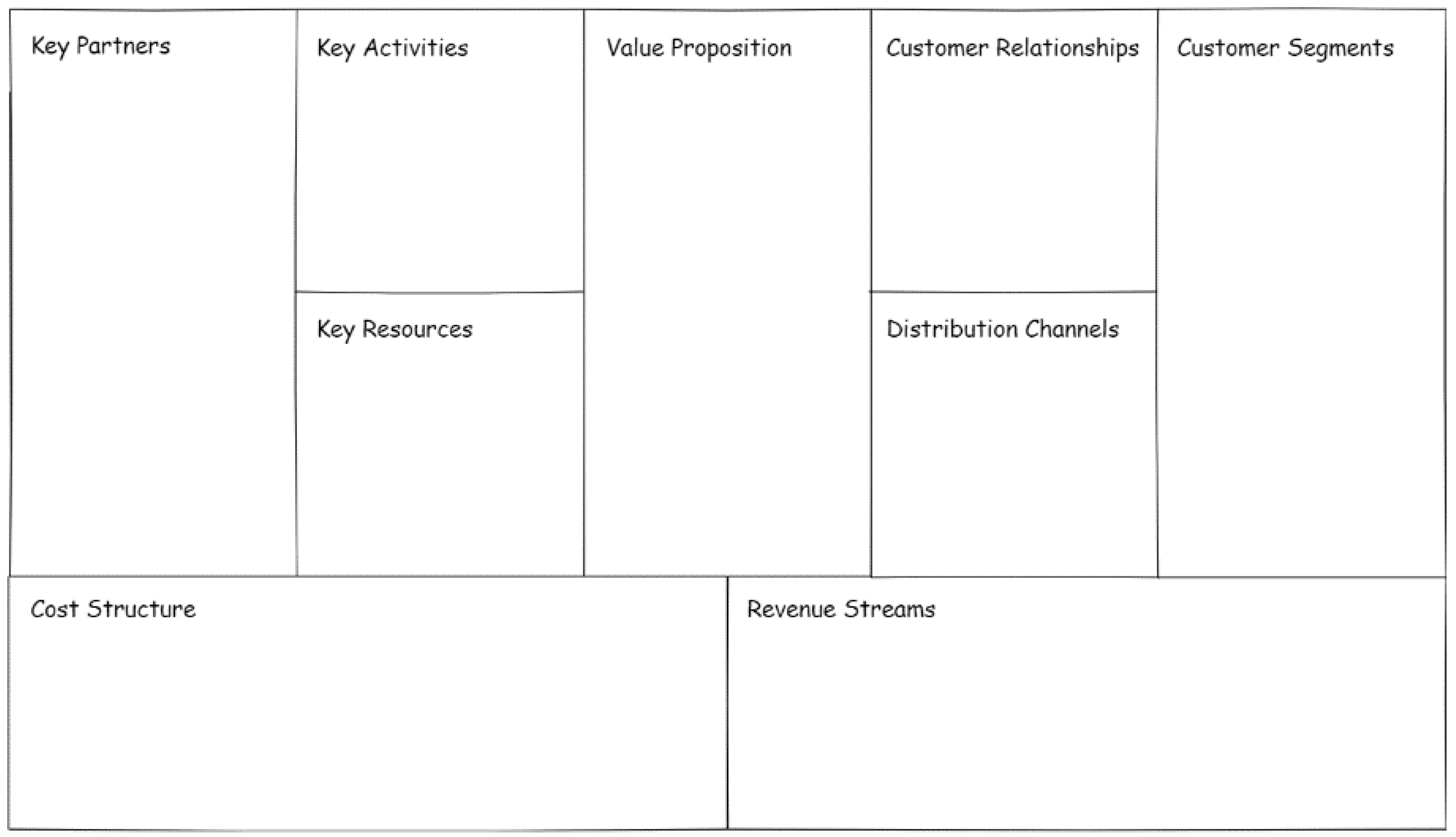

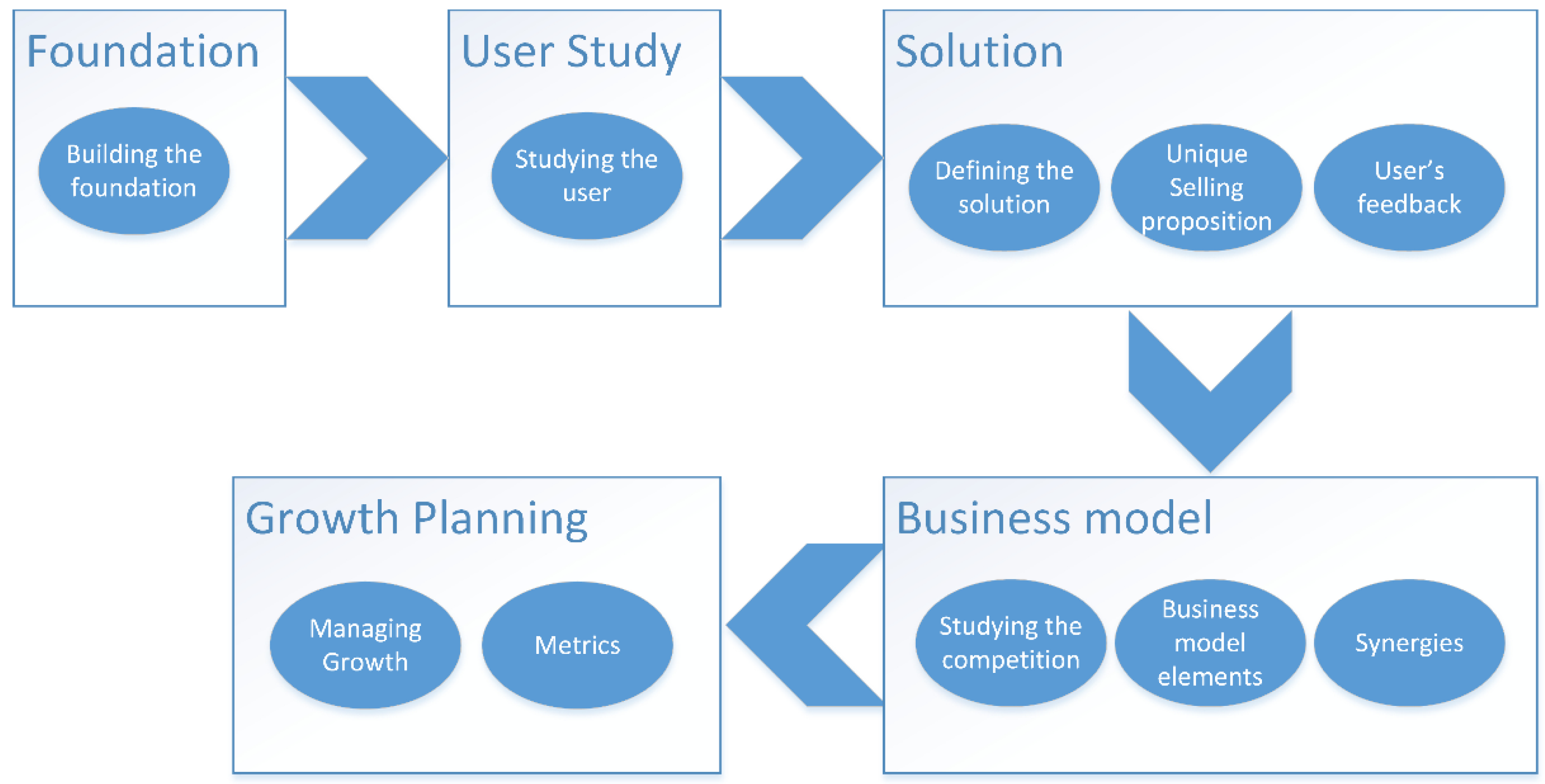
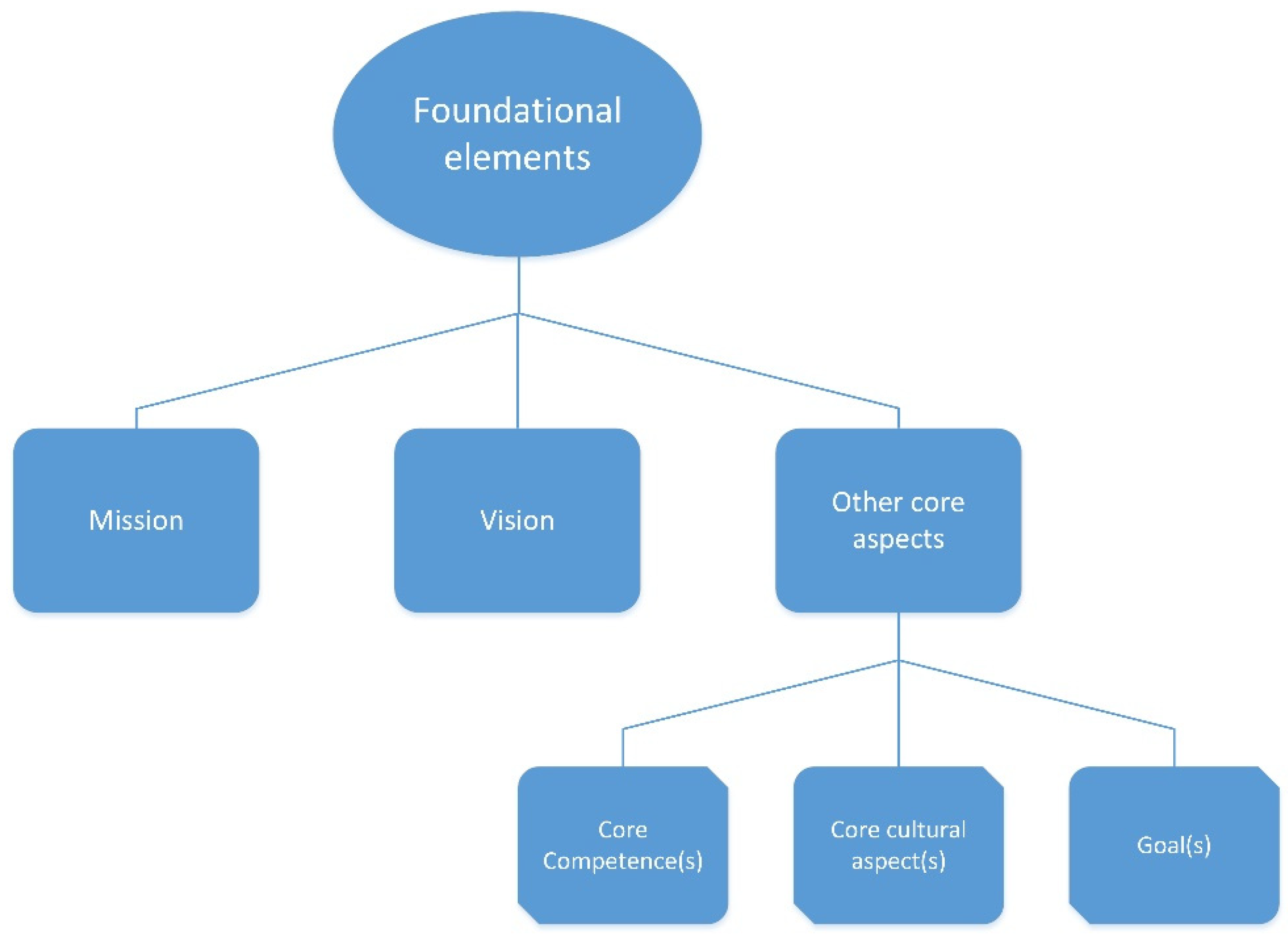
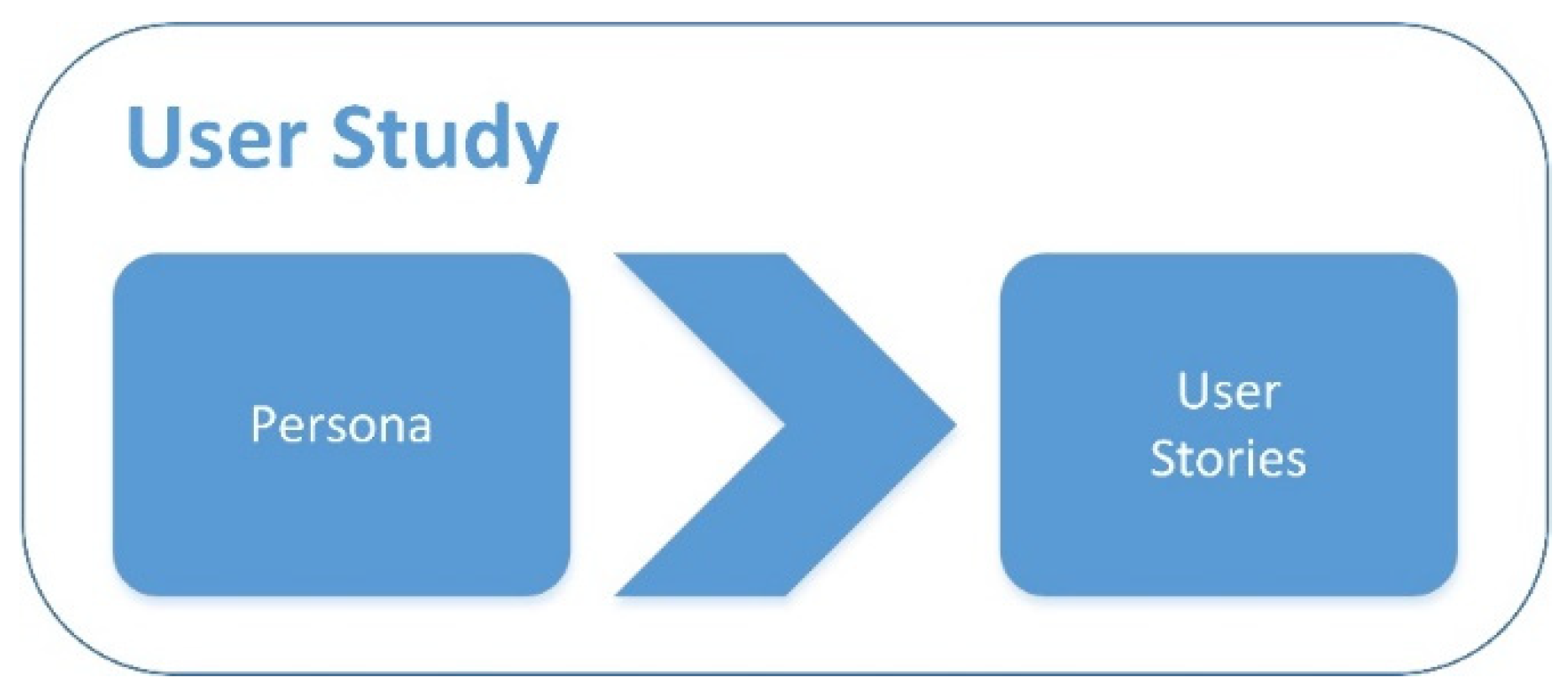
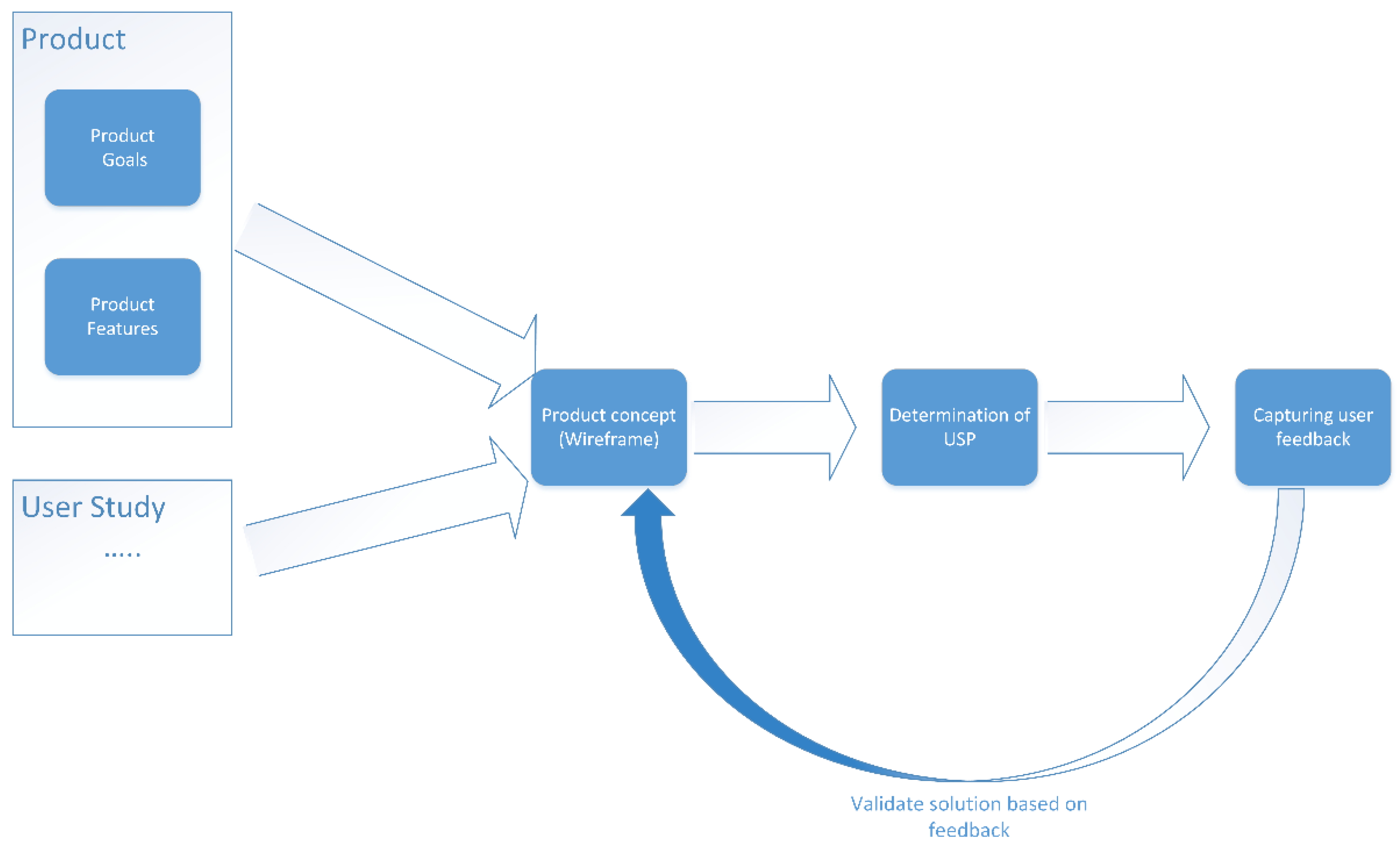

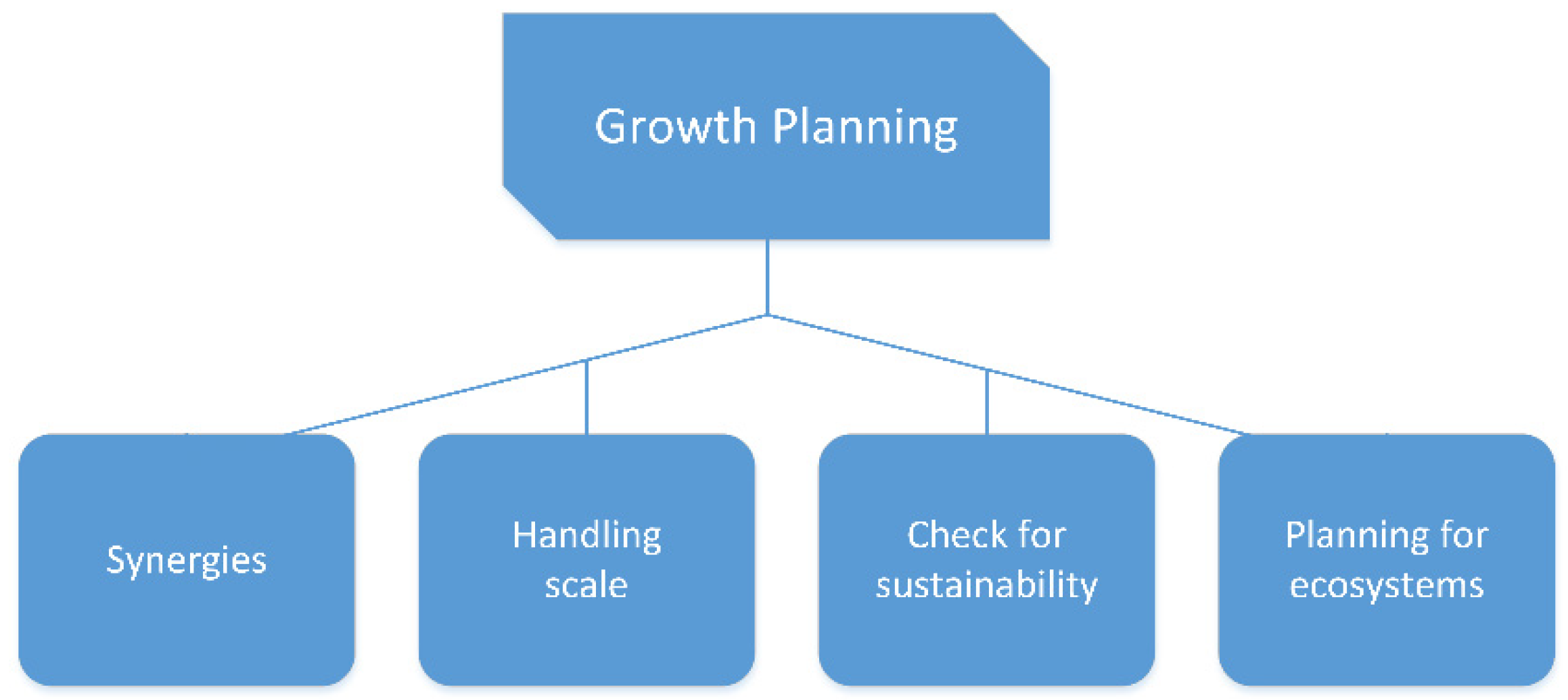
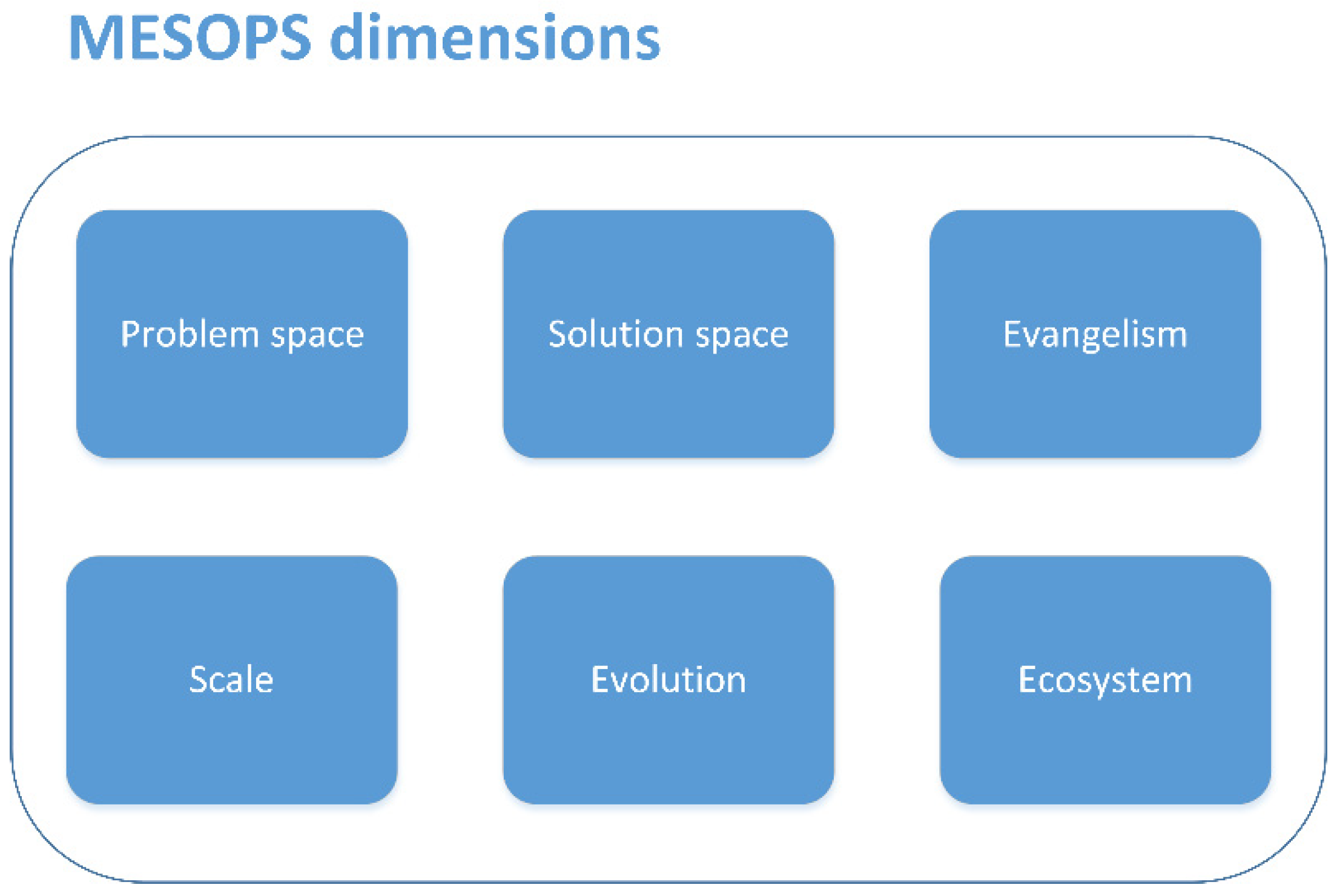
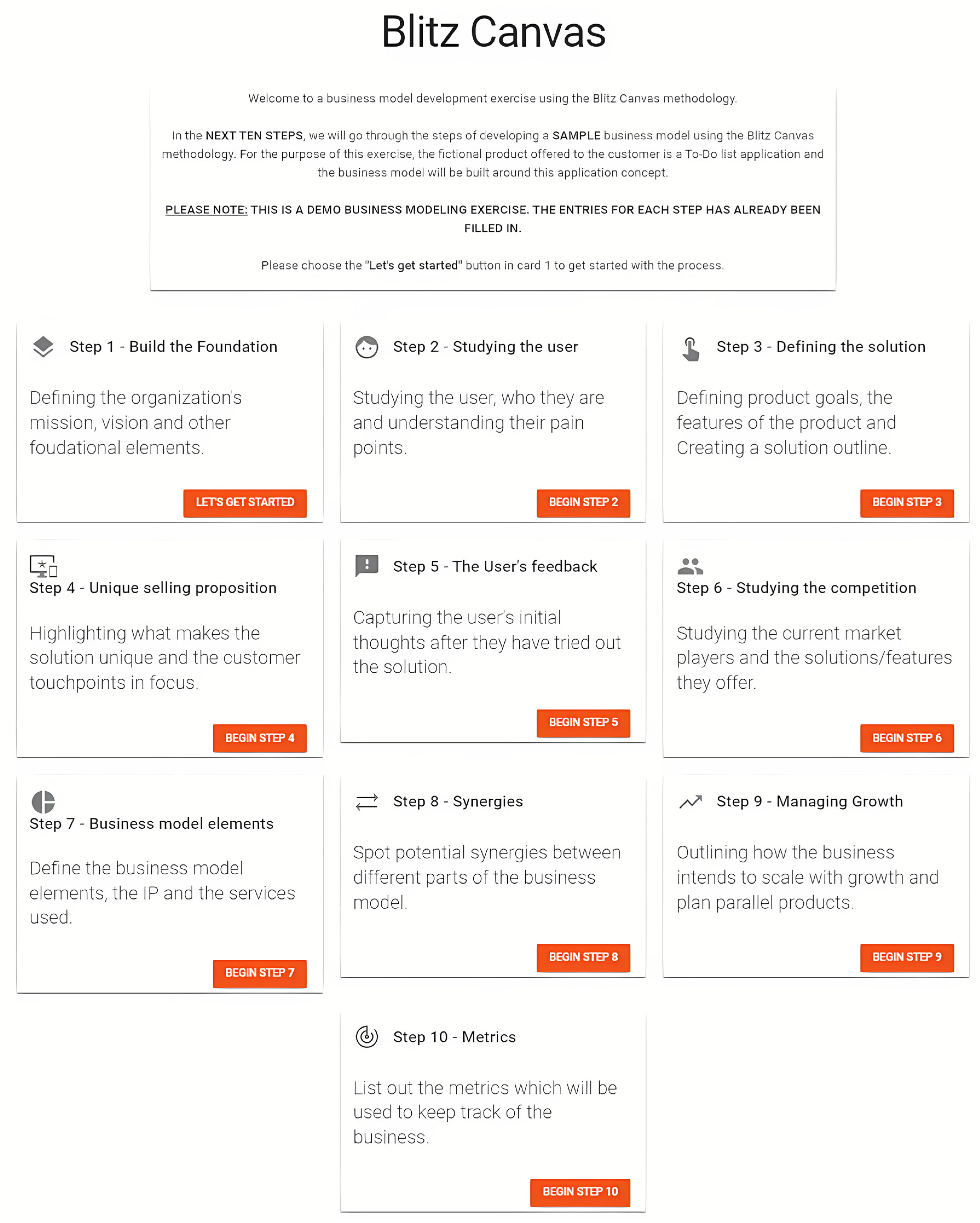
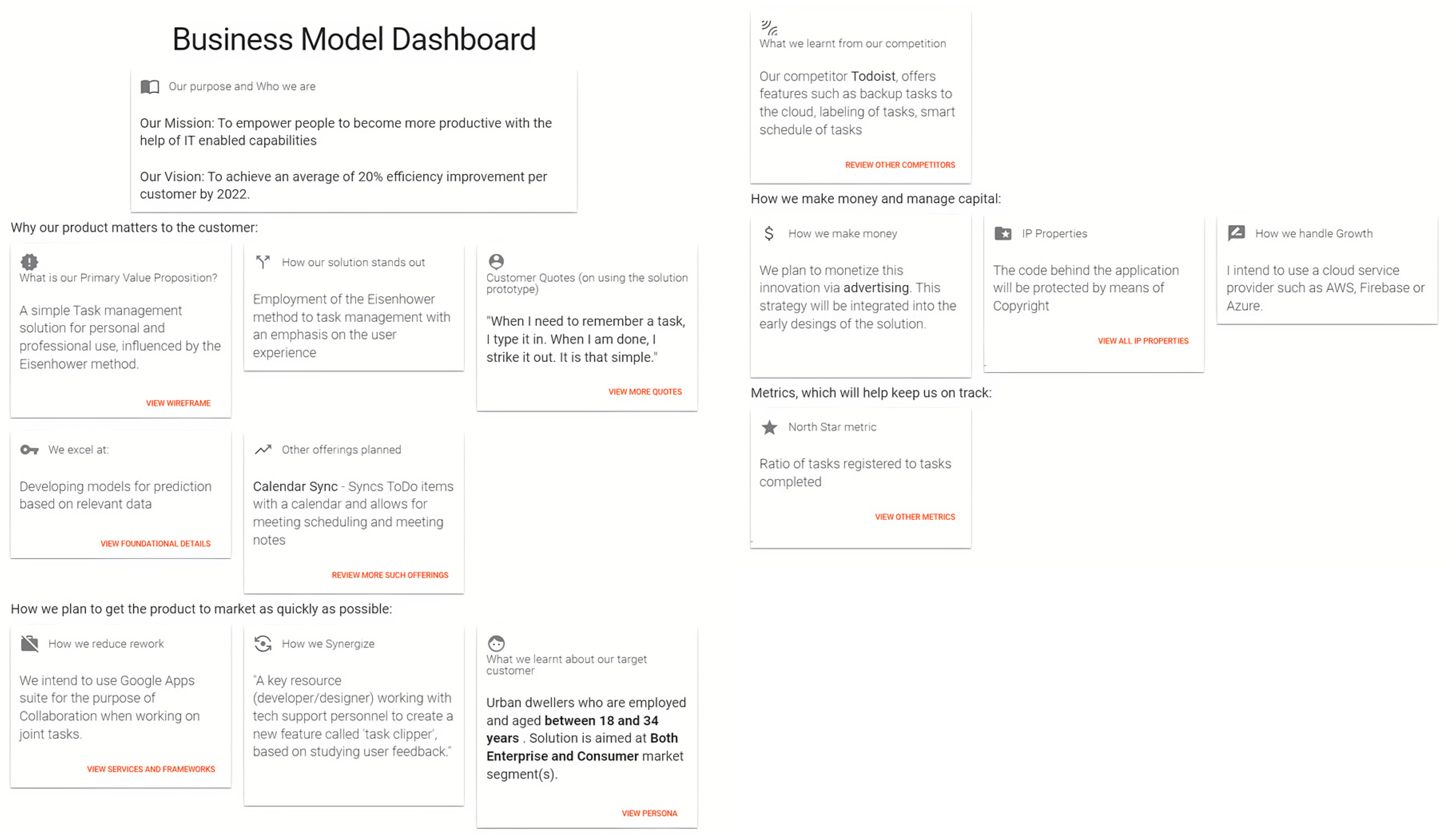
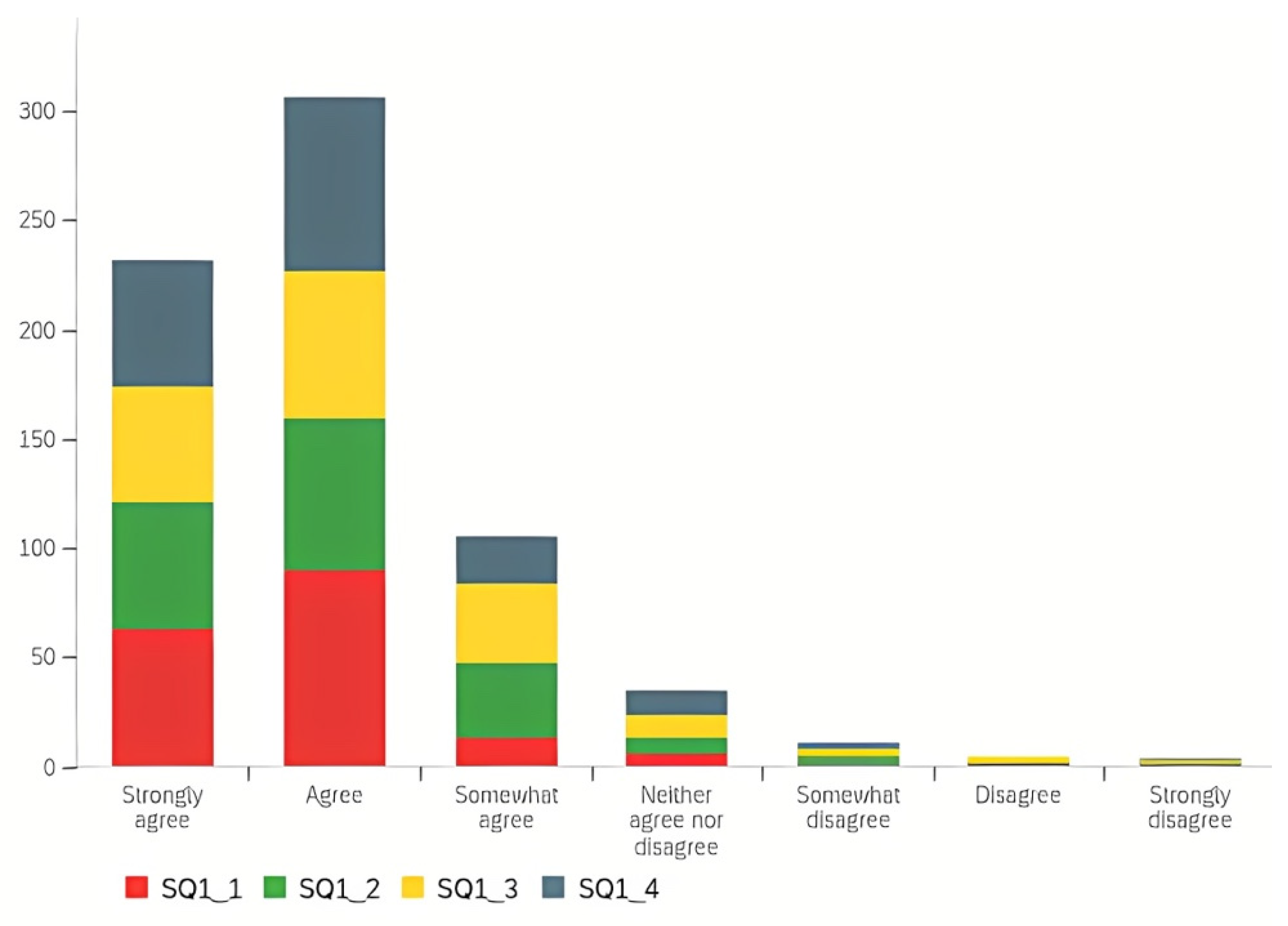
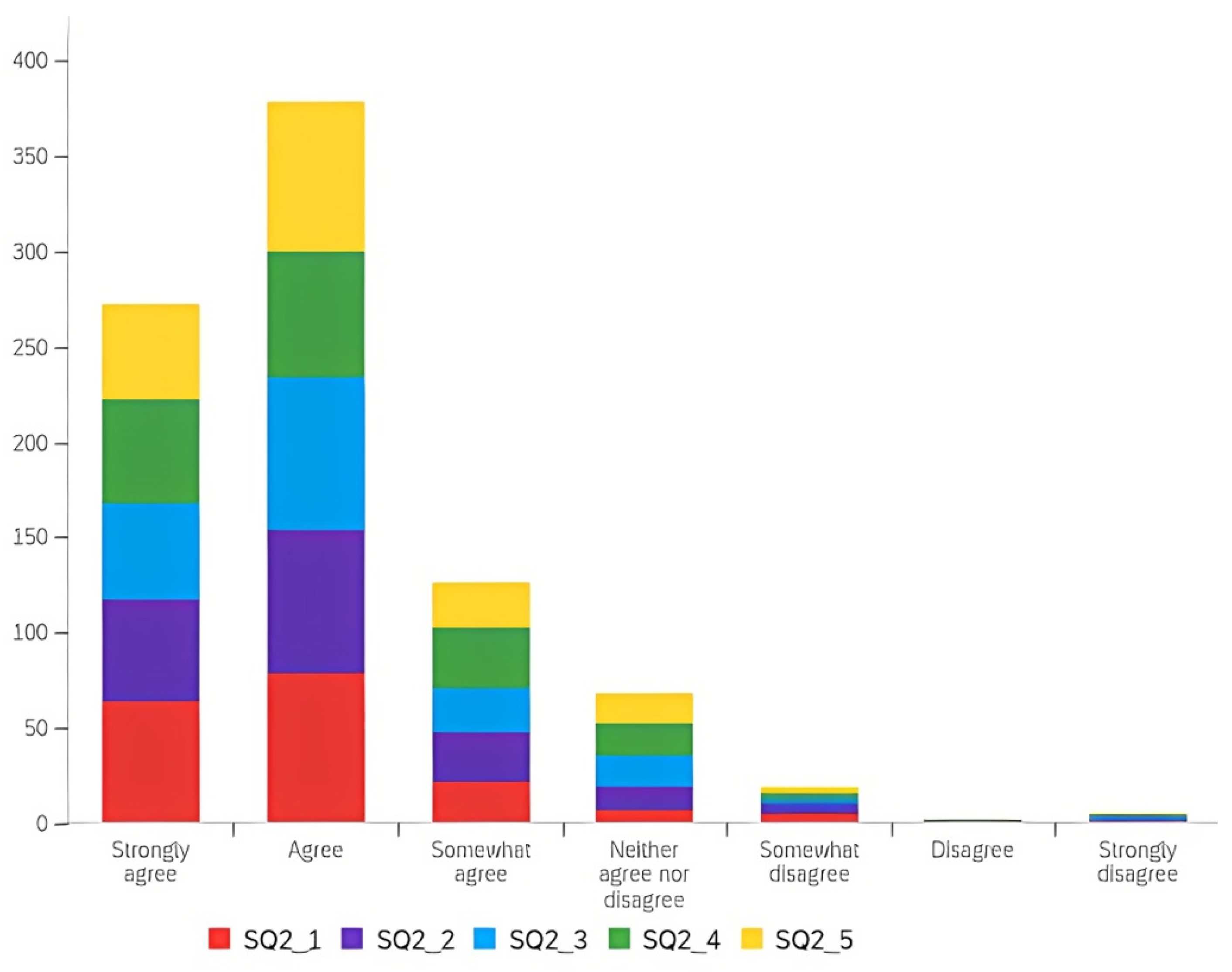

| Shortcomings | Source(s) |
|---|---|
| Consideration of competing entities from the market | (Kraaijenbrink, 2012 [28]) |
| Establishment of the unique selling proposition (USP) | (Maurya, 2010 [29]) |
| Taking into account performance measurement, using metrics such as KPIs | (Spanz, 2012 [30]; Maurya, 2010 [29]) |
| Consideration of synergies within the BMC | (Spanz, 2012 [30]) |
| Formulation of strategic goals or objectives of the startup | (Kraaijenbrink, 2012 [28]; Spanz, 2012 [30]) |
| Consideration of competence for solution development | (Spanz, 2012 [30]) |
| Research Questions (RQ) | Corresponding SQ |
|---|---|
| Could an easy-to-use, process-driven framework be proposed to aid in business model development and innovation for software startups around a product concept? | SQ1_1, SQ3_1 |
| Would the resultant framework provide a foundation for rapid development of the business model for a clearly differentiated value proposition, while keeping in mind the management of startup capital? | SQ1_2, SQ2_2, SQ2_4, SQ1_3, SQ3_1, SQ1_4 |
| Could the proposed framework be designed to address the shortcomings of the business model canvas outlined in Section 2.3 of this work? | Addressed in Table 3 |
| Shortcomings of the BMC | Corresponding SQ |
|---|---|
| Formulation of strategic goals or objectives of the startup (Kraaijenbrink, 2012 [28]; Spanz, 2012 [30]), consideration of competence for solution development (Spanz, 2012 [30]) | SQ2_1 |
| Establishment of USP (Maurya, 2010 [29]) | SQ2_2 |
| Consideration of competing entities from the market (Kraaijenbrink, 2012 [28]) | SQ2_4 |
| Consideration of synergies within the BMC (Spanz, 2012 [30]) | SQ2_5 |
| Taking into account performance measurement using metrics such as KPIs (Spanz, 2012 [30]; Maurya, 2010 [41]) | SQ2_3 |
| Survey Question (SQ) | N | Min | Max | Mean | Std. Dev | |
|---|---|---|---|---|---|---|
| SQ1_1 | The tool provided a step-by-step pathway for the startup to create a business model from start to completion around their product idea. | 174 | 1 | 7 | 6.14 | 0.91 |
| SQ1_2 | The dashboard clearly presented the information, with a focus on why the product should matter to the customer/end-user. | 174 | 1 | 7 | 5.94 | 1.06 |
| SQ1_3 | The dashboard clearly presented the information, with a focus on getting the product to market quickly. | 175 | 1 | 7 | 5.82 | 1.14 |
| SQ1_4 | The tool covered the required areas needed to build a good business model. | 174 | 1 | 7 | 6.01 | 1 |
| SQ2_1 | The tool helped gather information regarding the strategic aspects of a startup, such as the mission of the startup. | 175 | 1 | 7 | 6.04 | 1.04 |
| SQ2_2 | The tool clearly highlighted the unique selling proposition (USP) of the product. | 175 | 1 | 7 | 5.88 | 1.08 |
| SQ2_3 | The tool helped collect metrics to measure various aspects such as the growth of the startup. | 173 | 1 | 7 | 5.91 | 1.02 |
| SQ2_4 | This tool made it easy to gather information regarding competing products and study them. | 174 | 1 | 7 | 5.82 | 1.13 |
| SQ2_5 | Using the tool, synergies between business segments could be captured. | 174 | 1 | 7 | 5.88 | 1.04 |
| SQ3_1 | Creating the business model using the tool was a quick and easy process. | 173 | 1 | 7 | 6.02 | 0.9 |
Publisher’s Note: MDPI stays neutral with regard to jurisdictional claims in published maps and institutional affiliations. |
© 2022 by the authors. Licensee MDPI, Basel, Switzerland. This article is an open access article distributed under the terms and conditions of the Creative Commons Attribution (CC BY) license (https://creativecommons.org/licenses/by/4.0/).
Share and Cite
Shanbhag, N.; Pardede, E. The Blitz Canvas: A Business Model Innovation Framework for Software Startups. Systems 2022, 10, 58. https://doi.org/10.3390/systems10030058
Shanbhag N, Pardede E. The Blitz Canvas: A Business Model Innovation Framework for Software Startups. Systems. 2022; 10(3):58. https://doi.org/10.3390/systems10030058
Chicago/Turabian StyleShanbhag, Narendranath, and Eric Pardede. 2022. "The Blitz Canvas: A Business Model Innovation Framework for Software Startups" Systems 10, no. 3: 58. https://doi.org/10.3390/systems10030058
APA StyleShanbhag, N., & Pardede, E. (2022). The Blitz Canvas: A Business Model Innovation Framework for Software Startups. Systems, 10(3), 58. https://doi.org/10.3390/systems10030058






